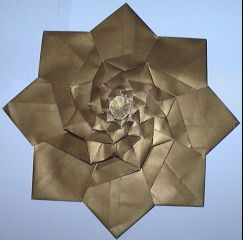
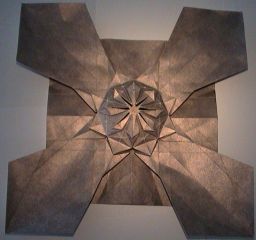
This is my favorite method of sanity maintenance. (Allegations that this doesn't make one particularly sane are cheerfully acknowledged.) Each of these was folded from one sheet of paper... no cutting and no drawing allowed. Just folding. I haven't yet tracked down the origins of this particular branch of origami, but I know that some of the early work was done by Kawasaki and Fujimoto and most of the recent innovation has been by Chris Palmer. All of the designs on this page were derived from pictures he's put up on his Shadowfolds site. (Warning: Shadowfolds is visually beautiful but is all Macromedia Flash. If you're running recent versions of Netscape or IE you probably already have this installed.) He designed them. I just folded them. If you're interested in the math behind these patterns, I recommend the What is a Tessellation? page at the Math Forum.
The translucent pieces were all folded from glassine. The two red pieces began from pieces 500mm square; all the others began as 700mm squares. (The one exception is the brown triangles-and-hexagons strip, which began as a piece roughly 1 meter by 500 mm.)
No diagrams exist for most of these. A good source to get you started is Chris's Hira-Ori tape. (Origamido lists this as out of stock. If you're interested, call them and ask if this is still true. The tape is worth it.) If you're looking for other web pages, I know of the following three:
Without further ado, here are the images! Everything you see here is a thumbnail... you can click on it for a higher-resolution version.
Neither of these patterns have much at all to do with regular tessellations, although it's possible to get the octagon collapse to work as part of a tiling of squares.

|

|
| A flower tower is a recursive pattern based on a closed-back twist fold. Tom Hull posted some instructions for making a flower tower to the origami mailing list a while back. | The crease pattern for this piece consists of a ring of eight bird bases surrounding a central octagon. |
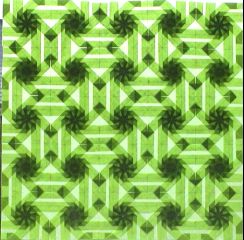
|
|
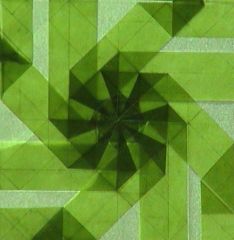
|
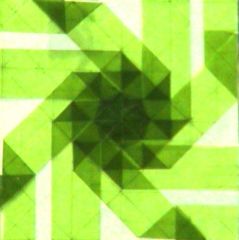
|
| This is what happens when you fold an open-back I octagon on top of a closed-back octagon twist. The variations come from things you can do to the closed-back twist before the final collapse. | |
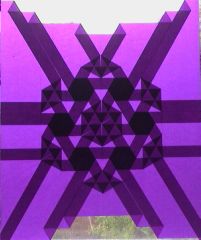
|

|
| This is 6.3.6.3 filling a hexagon instead of a long rectangle. This pattern was originally due to Shuzo Fujimoto. | |
The following three pieces are what Chris Palmer calls whirl spools. They are each based on the Archimedean tessellation 6.4.3.4 but have differing levels of recursion. On the Shadowfolds site these are described as "Watering Fujimoto's Garden".
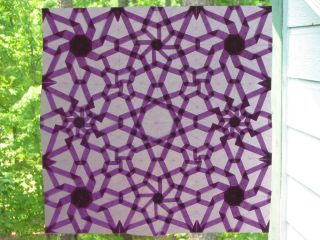
|
|
| This was made as a wedding gift for Merlin and Uriel. Like most of the others, it's based on a floor tiling from the Alhambra. If you stare at it long enough, it's based on 8.8.4 (like the red twist octagons above), but it's easier to treat it as 4.4.4.4 (a regular grid of squares) and deal with the vertices of the grid separately. |
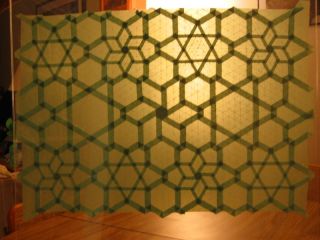
|
|
| This was a wedding gift for tyee and OJ. It's another tiling pattern from the Alhambra. Unlike most of the tessellations I've made, this one incorporates different pleat widths: if you look at the insides of the stars on top and bottom, they're the same patterns as in the middle, only smaller. It's possible to fold this so you can't see the grid of triangles in all the light areas, but I rather like the effect. I'll put in a better picture of this once tyee and OJ get a chance to take one. |
I will be updating this page as I fold more of these and obtain better pictures. Many thanks to Tanner Lovelace for his time and effort taking pictures one semi-cloudy afternoon. There are more pictures in the origami folder of my gallery.
Page created by Andy Wilson
Last updated 3 July 2002